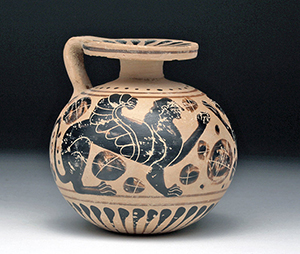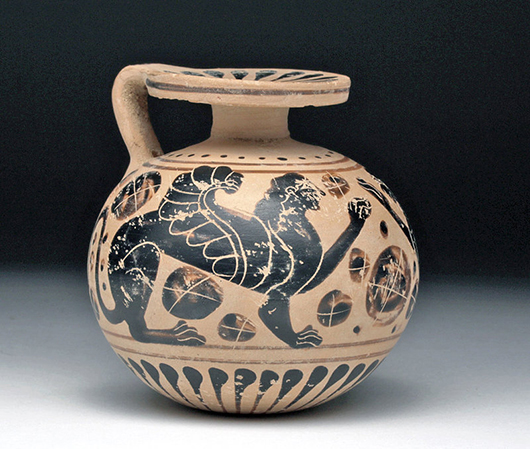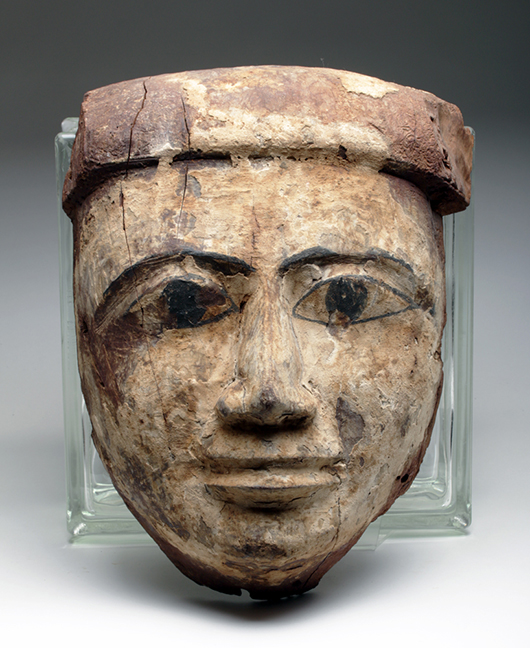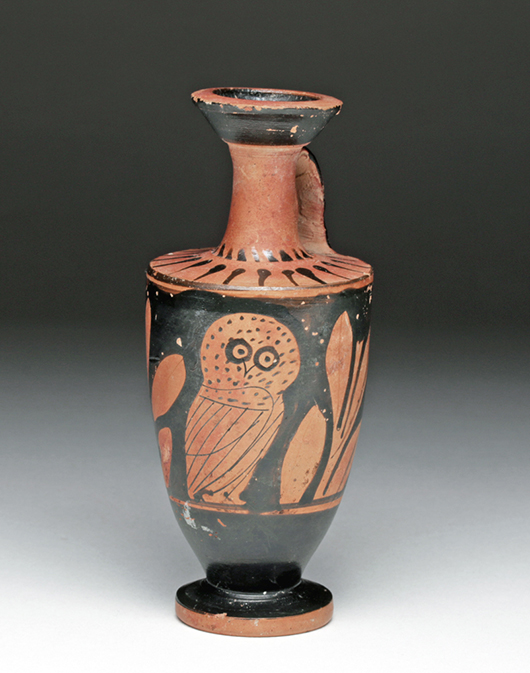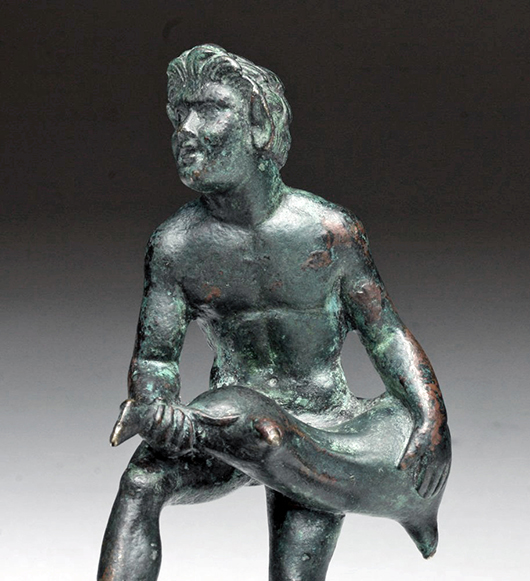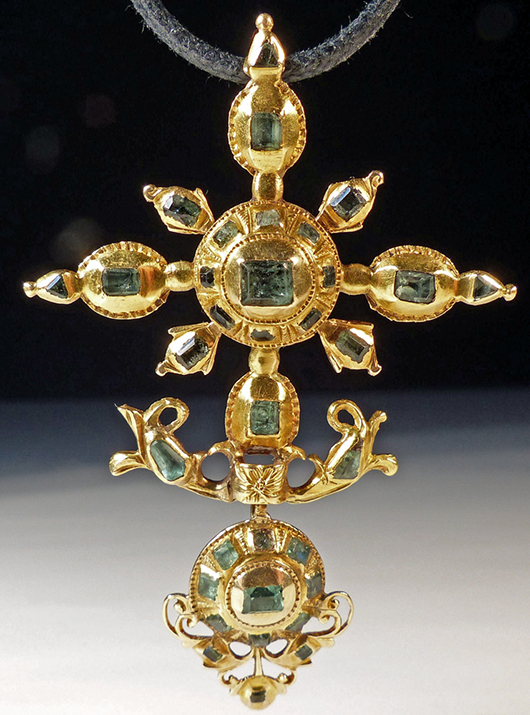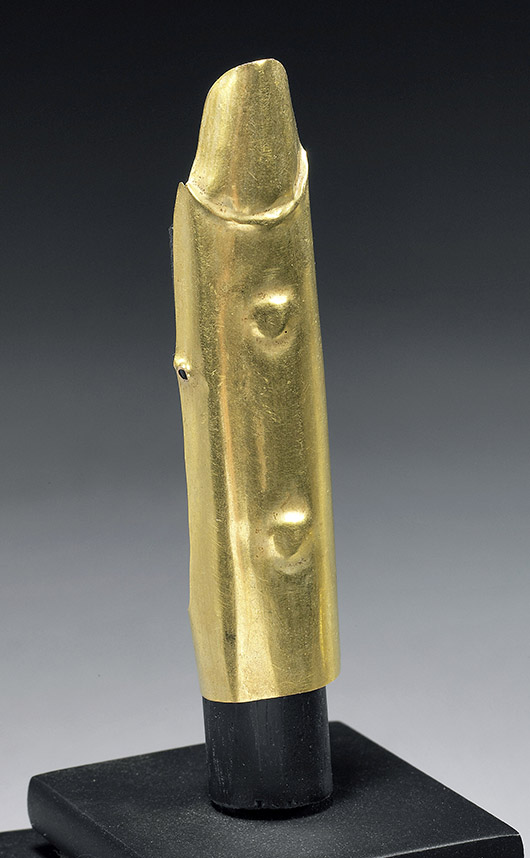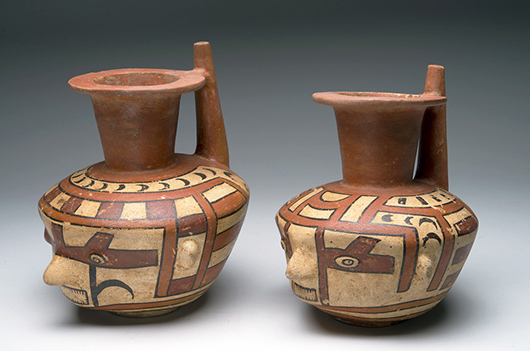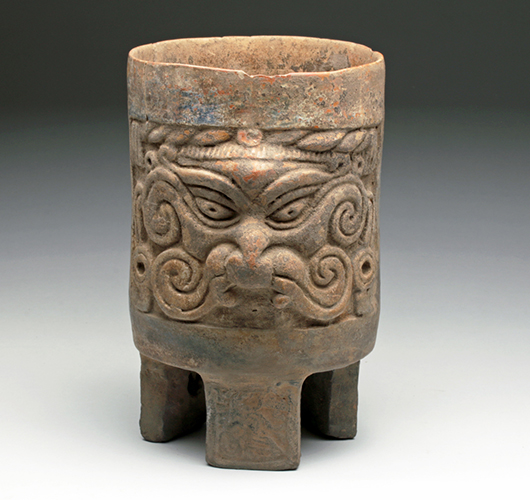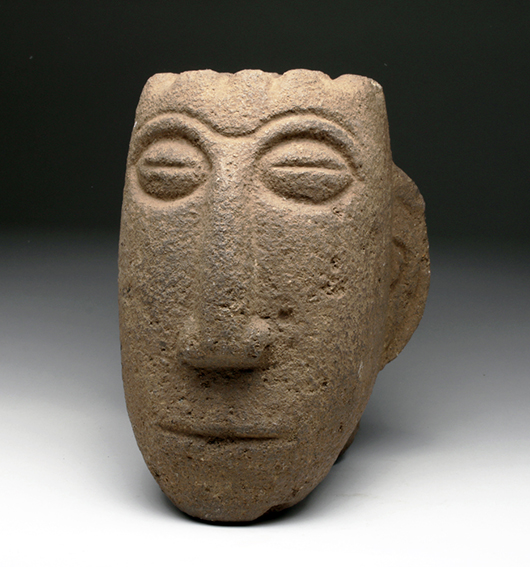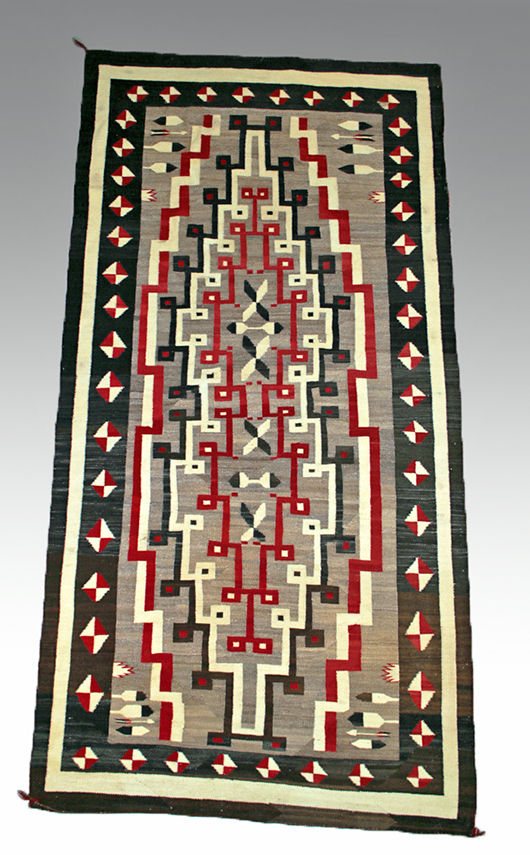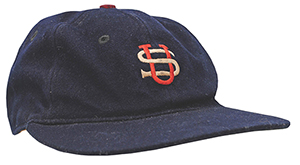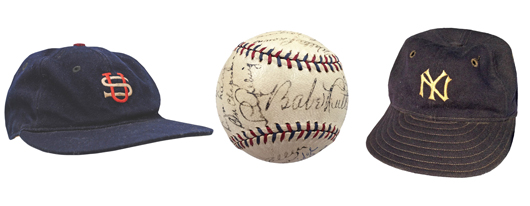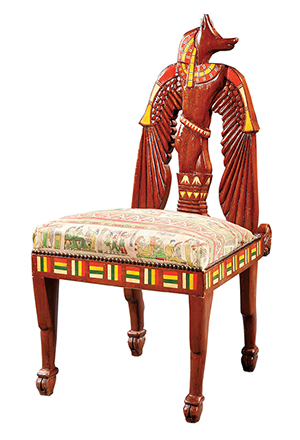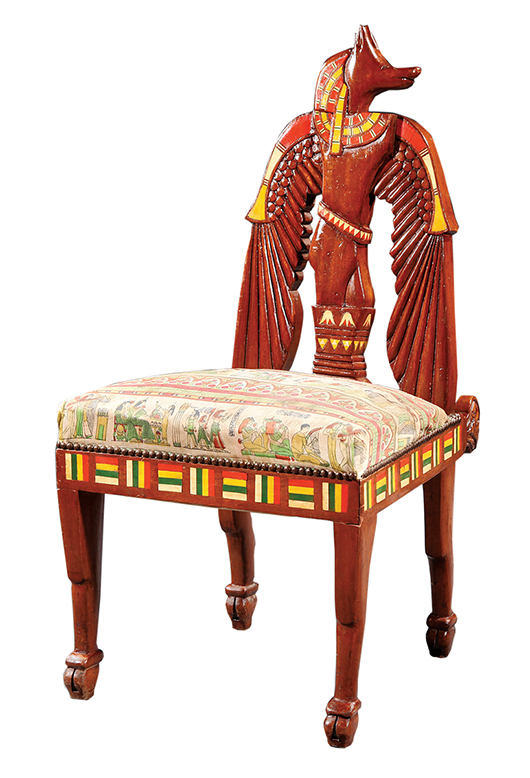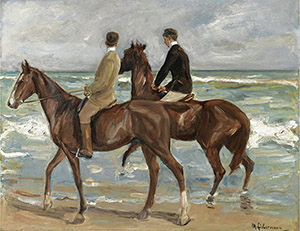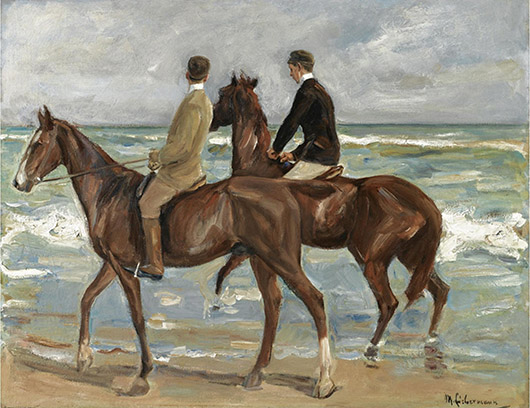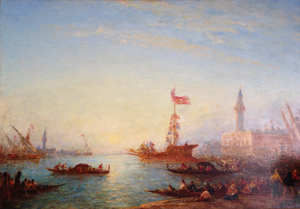
Felix-Francois Georges Philibert Ziem (French, 1821-1922), oil on canvas of Doge’s Barge Bucentaur, 32 x 47in, est. $30,000-$50,000. Quinn’s Auction Gallery image FALLS CHURCH, Va. – For centuries, Venice has been a glittering jewel with the ability to capture the hearts, minds and brushes of artists from all corners of the world. Its stunning waterways, architecture and landscapes have been interpreted on canvas in countless ways, a few of which will take the spotlight in a Dec. 6 Fine Antiques & Decorative Arts Auction to be held by Quinn’s Auction Galleries of Falls Church, Virginia. Absentee and Internet live bidding will be available through LiveAuctioneers.
Leading off is a Felix-Francois Ziem (French, 1821-1911) seascape of the Grand Canal and the Doge’s barge on Ascension Day during the Marriage of the Sea ceremony. This revered Venetian tradition that celebrates Italy’s dominance of the sea has been the subject of numerous paintings over the centuries, the most famous being those by 18th-century masters Francesco Lazzaro Guardi and Giovanni Antonio Canaletto. The 32- by 46-inch painting by Ziem is entered in Quinn’s auction with a conservative $30,000-$50,000 estimate.
Another fine-art highlight with Italian subject matter is the lakeside view of the island of Isola Bella and Palazzo Borromeo on Lago Maggiore, by British artist James Webb (1825-1895). It took 400 years and hundreds of workers to transform Isola Bella from a barren rock to a spectacular island-garden of delights. In 1632, construction began on the isle’s incomparable Palazzo Borromeo, which is now a popular tourist attraction. Housing French Marshal Louis Alexandre Berthier’s Gallery, the palazzo shelters priceless artworks which are displayed amid baroque splendor of an unimaginable level.
James Webb’s impression of Isola Bella and Palazzo Borromeo is entered with a $5,000-$7,000 estimate, but Quinn’s vice president Matthew Quinn said he feels “certain the painting will exceed that price range,” adding, “It’s an accomplished work of art, and the subject matter is timeless. Anyone with an eye for art would immediately connect with it and identify its quality as being something quite exceptional.”
It’s no surprise that Quinn’s, with its close proximity to the Nation’s Capital and long-held reputation for working with local consignors, would be chosen to auction the estate of Dorothy Wurz, widow of renowned White House interior designer Nelson Wurz, of Nelson Beck & Associates.
From the Wurz estate comes Washington DC-area artist Lucien Whiting Powell’s (1846-1930) oil-on-canvas interpretation of the Grand Canal. With its sparkling waterway, bathed in sunlight and dotted with crimson gondolas, it is sure to be of interest to both aficionados of impressionistic art and those who collect the work of local artists, said Quinn. The “Turneresque” landscape, masterfully executed in shades of gold, orange and eau de Nil, is estimated at $2,500-$3,500.
Also from the Nelson Wurz collection are two midcentury modern roundelay hanging screens created by the Michael and Frances Higgins Glass Studio. The larger of the two is 42 by 24 inches. Each is estimated at $800-$1,200.
The remainder of the sale features modern design, European furniture and a large collection of Japanese artwork, including netsuke and woodblock prints.
The auction will begin at 11 a.m. Eastern Time and will be held at Quinn’s Auction Galleries located at 360 South Washington Street in Falls Church, Virginia.
For information on any lot in the auction, call 703-532-5632 or email info@quinnsauction.com.
View the fully illustrated catalog and sign up to bid absentee or live via the Internet at www.LiveAuctioneers.com.
# # #
ADDITIONAL LOTS OF NOTE
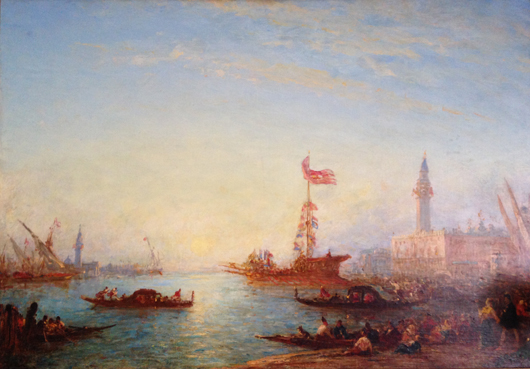
Felix-Francois Georges Philibert Ziem (French, 1821-1922), oil on canvas of Doge’s Barge Bucentaur, 32 x 47in, est. $30,000-$50,000. Quinn’s Auction Gallery image 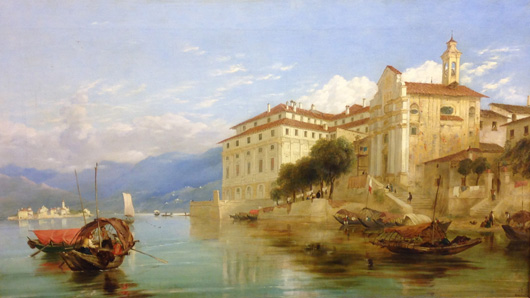
James Webb (British, 1825-1895), oil on canvas of Palazzo Borromeo, Isola Bella, Lago Maggiore, 26 x 45in, est. $5,000-$7,000. Quinn’s Auction Gallery image 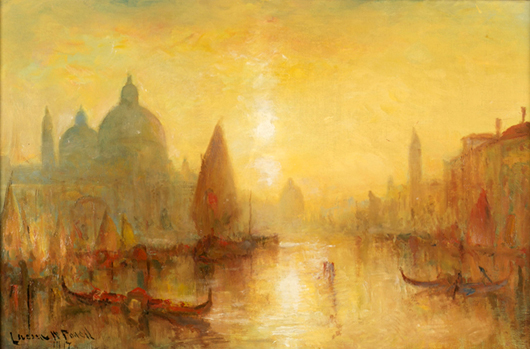
Lucien Powell (Virginia, 1846-1930), oil on canvas of Grand Canal 20 x 30in, est. $2,500-$3,500. Quinn’s Auction Gallery image 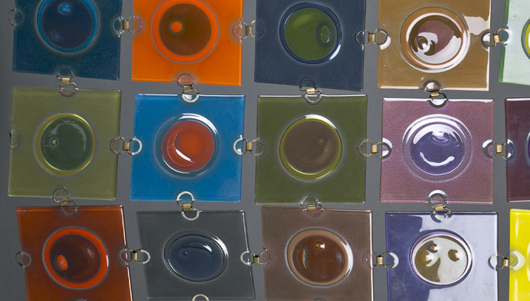
Closeup of Michael and Frances Higgins Studio 25-piece glass hanging screen, one of two to be auctioned, est. $800-$1,200 each. Quinn’s Auction Gallery image 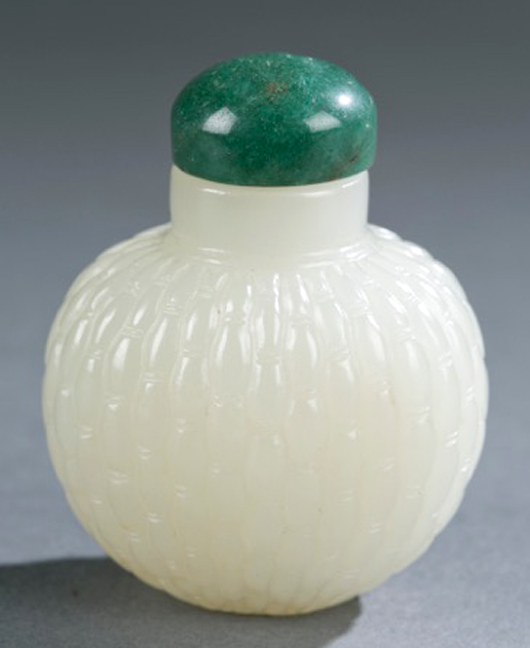
Snuff bottle to be auctioned on December 6. Quinn’s Auction Gallery image 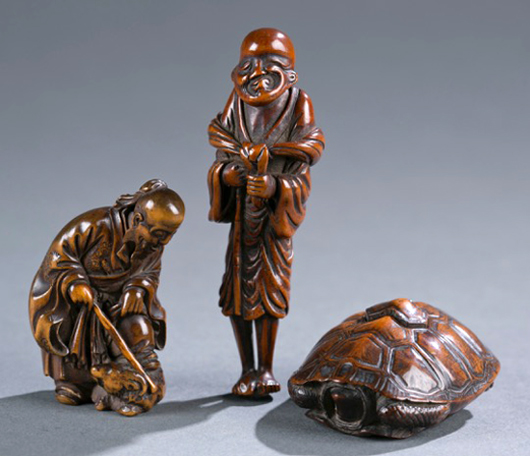
Three examples from a selection of netsukes to be auctioned on Dec. 6. Quinn’s Auction Gallery image


